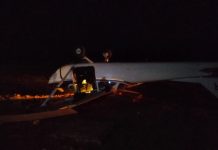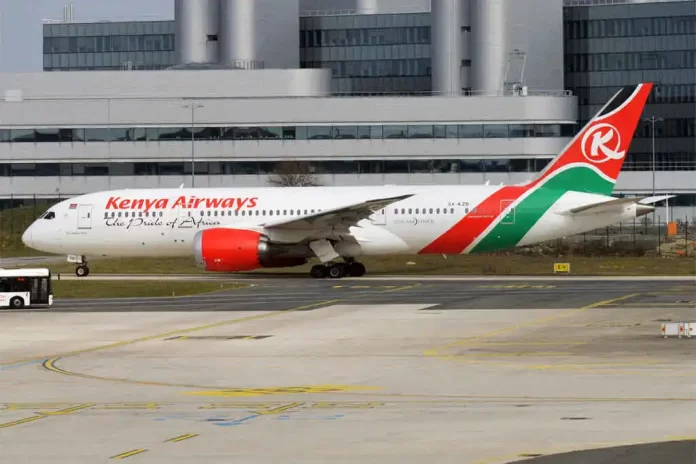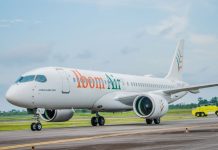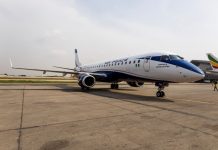Kenya Airways is making strategic investments in mid-life fleet upgrades and cargo expansion as part of a broad effort to boost operational efficiency, strengthen its market position, and support Africa’s economic growth. In 2025, the airline added a 170-seat Boeing 737-800 passenger aircraft and expanded its freighter fleet with a new Boeing 737-800F. This brings its total passenger fleet to 35 aircraft and cargo fleet to four freighters—three Boeing 737-300Fs and one Boeing 737-800F. These aircraft support key trade routes across Africa, the Middle East, and Asia.
The new passenger aircraft, delivered in February 2025 from Dubai Aerospace Enterprise (DAE), is part of the airline’s “Project Kifaru 2” turnaround strategy. According to Group Managing Director and CEO Allan Kilavuka, this marks a pivotal milestone in the airline’s fleet modernization journey, providing increased seat capacity and enhancing operational reliability amid a challenging global aviation environment.
Cargo expansion remains central to Kenya Airways’ growth strategy. The freighters are instrumental in meeting rising demand for air freight, especially under the African Continental Free Trade Area (AfCFTA) framework, which aims to unlock intra-African trade. The addition of the Boeing 737-800F in April 2024 allows the airline to serve more destinations more frequently, supporting businesses and stimulating regional commerce.
In April 2025, Kenya Airways also signed a Collaborative Inventory Planning (ECIP) agreement with Embraer to support its 13 Embraer E190s. This agreement improves spare parts management, reduces operational costs, and increases aircraft reliability through data-driven inventory planning and access to Embraer’s global logistics network. Carlos Naufel, President & CEO of Embraer Services & Support, said the partnership strengthens operational continuity and reinforces the long-term relationship between the two companies.
The airline’s approach to acquiring and deploying aircraft involves market assessment, supplier negotiations, safety compliance, and route optimization to ensure maximum return on investment. Similarly, its cargo operations are guided by market analysis, aircraft acquisition, route allocation, and performance monitoring, ensuring alignment with demand trends.
According to acting Chief Financial Officer Mary Mwenga, Kenya Airways is intentionally investing in mid-life fleet upgrades and fuel-efficiency retrofits over expensive fleet renewals. The airline is also seeking more flexible leasing arrangements that accommodate seasonal demand shifts. She emphasized the importance of aligning capacity with market realities, noting the need for agility without overexposure.
Mwenga revealed that at least four of Kenya Airways’ nine leased Boeing 737-800s have leases ending in 2026, with additional expiries in 2027, 2028, and 2030. In its widebody fleet, three of its nine B787-8s are leased, with two leases expiring in 2027. Currently, three B787-8s and one B737 are undergoing maintenance, affected by global shortages in maintenance slots, engines, and spare parts. The regional E190 fleet is being gradually phased out, with nine of the 15 aircraft currently out of service.
Kenya Airways’ financial recovery is notable. The airline posted a KES5.4 billion (USD41.8 million) after-tax profit in FY24, reversing a KES22.6 billion (USD175 million) loss the previous year. Revenues rose to KES188 billion (USD1.45 billion), reflecting a 6% growth driven by a 4% rise in passenger traffic and a 25% increase in cargo tonnage. Mwenga credited the airline’s turnaround to its multi-year restructuring plan, Project Kifaru, which prioritizes cost control, smarter route planning, digital transformation, and sustainability.
Strategic alliances, particularly with KLM Royal Dutch Airlines, have contributed to operational efficiency. The airline has also outsourced key services, adopted AI-powered systems, and implemented advanced fuel hedging strategies to manage currency risk and reduce expenses. Stronger working capital management and debt renegotiations have improved its balance sheet and liquidity position.
Looking ahead, Kenya Airways plans to deepen its cargo strategy, pursue AI-driven route optimization, and secure lease agreements tailored to evolving market conditions. The airline is also investing in workforce development through new academic and technical training programs.
Kenya Airways’ modernization efforts reflect a commitment to long-term growth, regional connectivity, and service excellence. Passengers can expect more travel options and improved service, while businesses benefit from enhanced cargo reliability and faster delivery across key trade corridors. As the airline strengthens its role in African aviation, it is positioning itself as a key enabler of intra-African trade and economic integration.
















